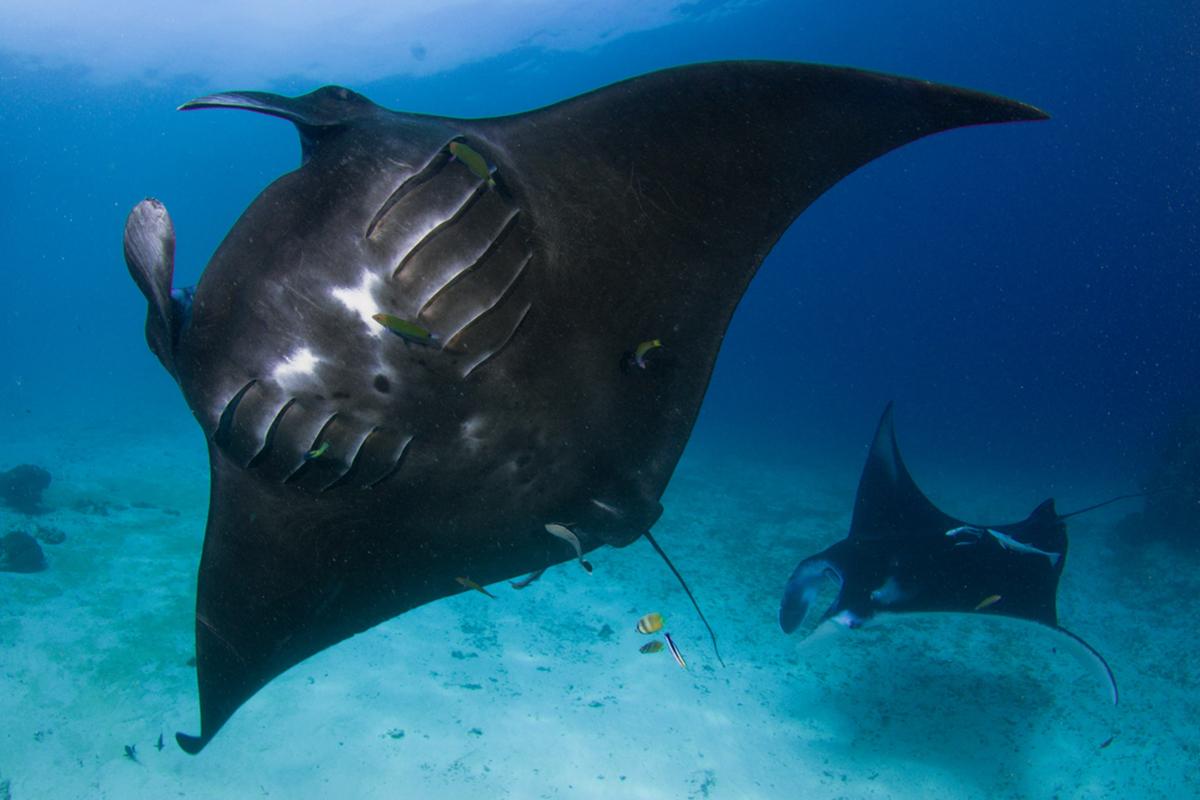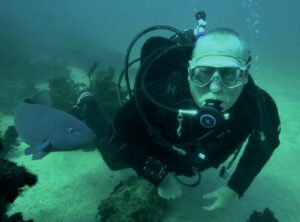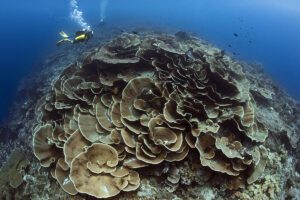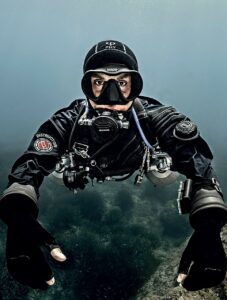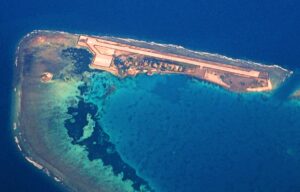The Beautiful Black Manta Rays of Raja Ampat
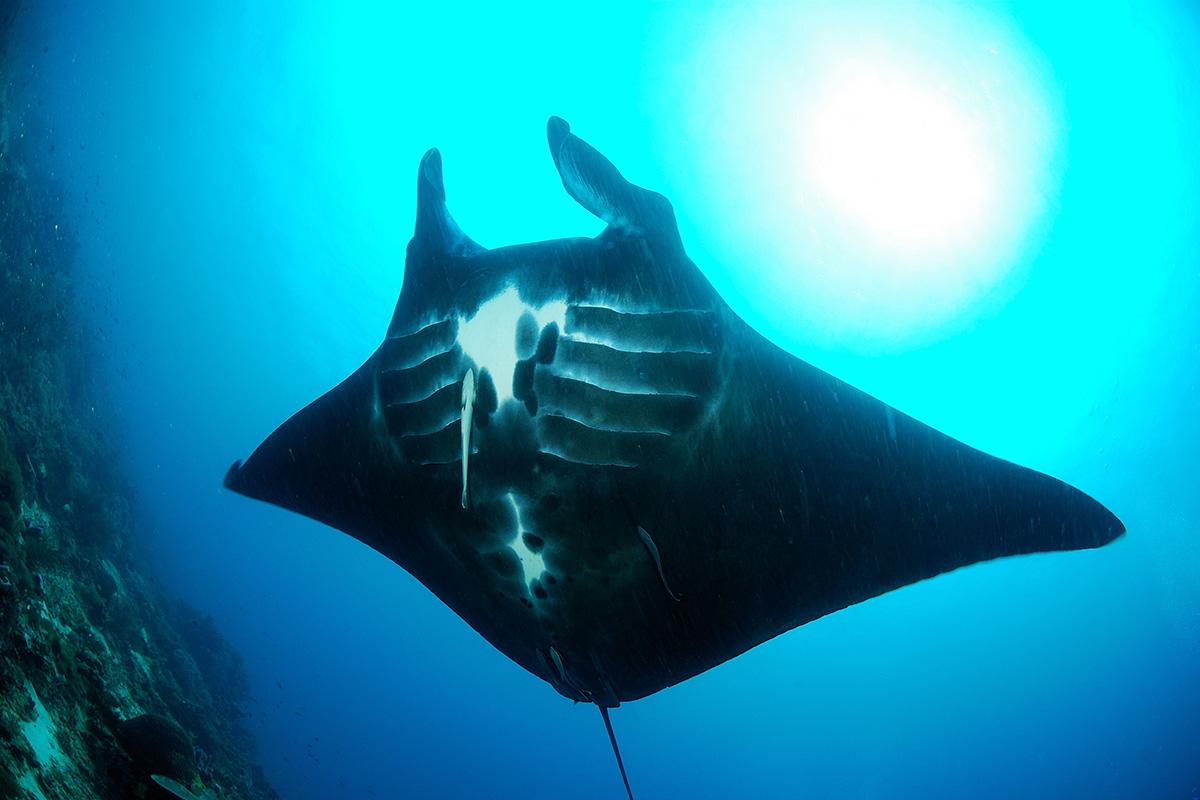
Manta rays are on many people’s bucket lists of marine creatures to dive with and Black Manta Rays are especially sought after.
While diving in Raja Ampat there are plenty of unique marine creatures to see. One of the most impressive is the black manta rays that are abundant in the area. In fact, a study by Marine Megafauna Foundation (MMF) found that up to 40% of the population of manta rays in Raja Ampat are black. The second largest population (16%) of black mantas is thousands of miles away in Equador. So, what causes these mantas to have such a special colouring and why are they so numerous in Raja Ampat. Read on to learn more about black manta rays.
Melanism in Manta Rays
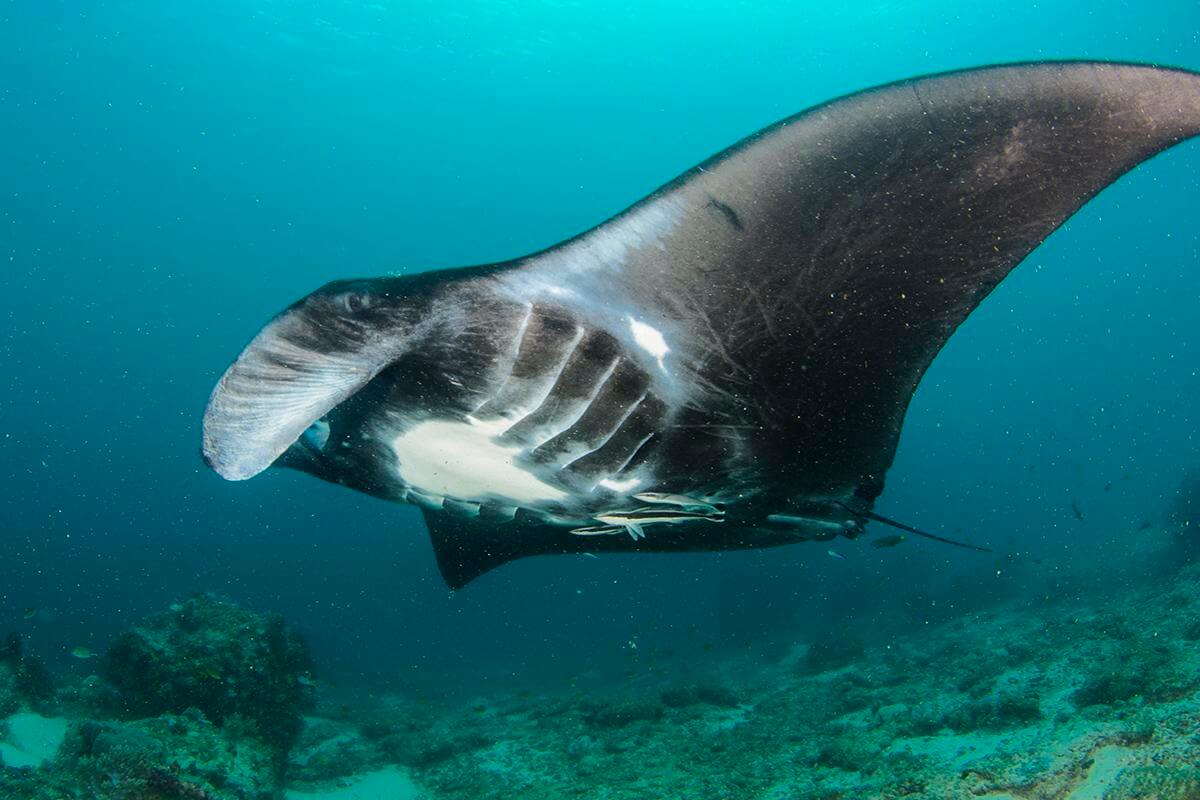
Black mantas are black all over, often with an area of white, or a blaze on their underside. They can however, be completely black all over. Their colouring is simply caused by an increase in darker pigment, or melanism. This is relatively common in land animals but is much rarer in marine species.
Manta rays are actually one of the only marine species that shows melanistic traits on a large scale. Often called colour-morphs, there are black manta rays spread throughout the worlds oceans with larger numbers in certain populations.
Why does melanism happen in manta rays?
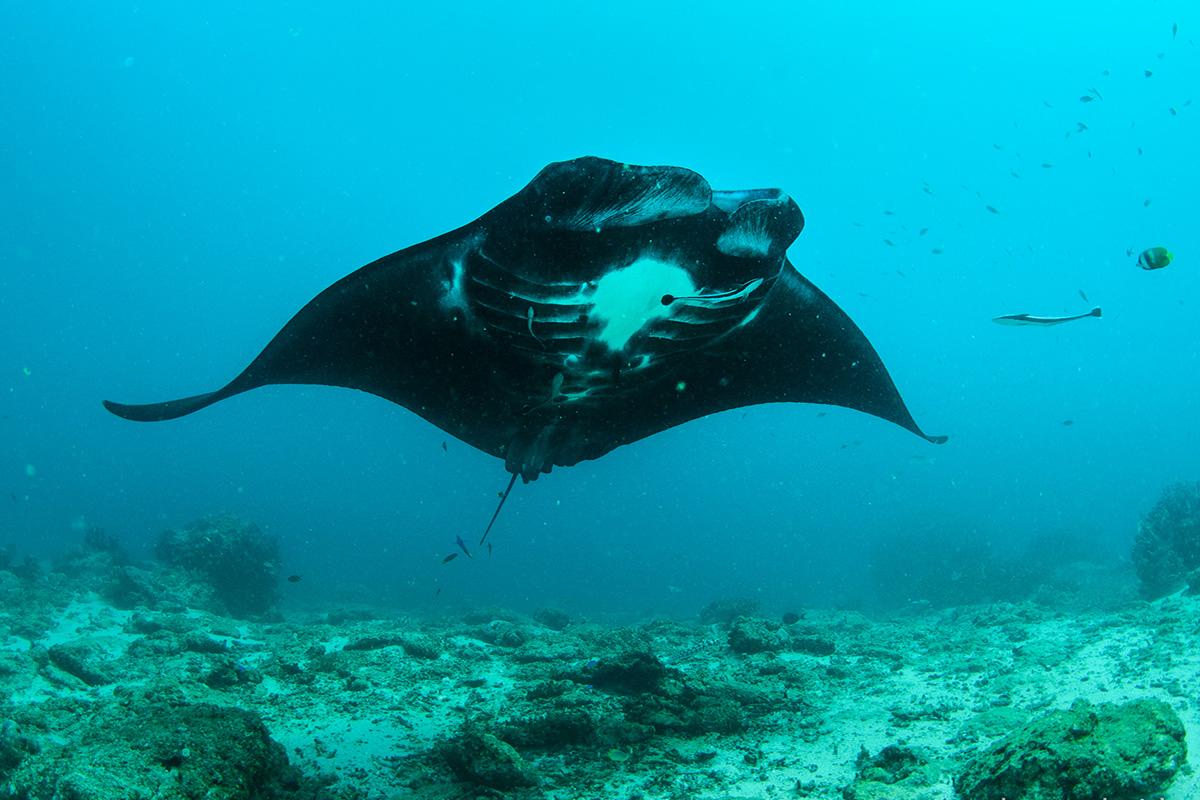
According to the large-scale studies conducted by MMF, there is no single cause for melanism in manta rays. Most colour morphs in animals make them less attractive to predators, but this seems not to be a factor in black manta rays. They think it is likely that, unlike most other colour morphs, black manta rays occurred because of random evolutionary processes such as genetic drift.
This theory makes for an interesting study on how manta ray populations around the world are connected. The melanistic trait can be passed when manta rays from different populations mate leaving a sort-of map of where mantas travel. This would also explain why there are so many black mantas in Raja Ampat. The population here is a remote population with little contact with other groups, keeping the black manta bloodline more prominent.
The pros and cons of melanism in manta rays
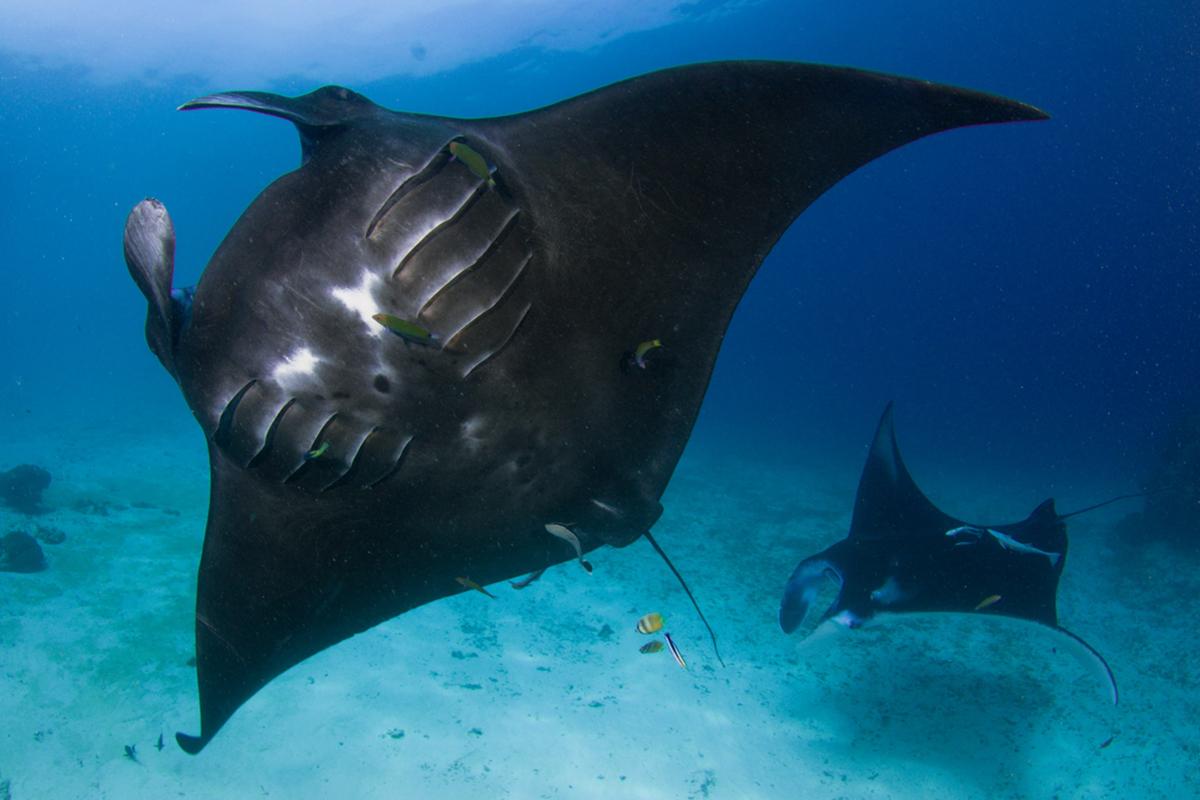
At first marine biologists thought the color morph in manta rays must be due to improved camouflage, which would be a definite pro. Unfortunately this proved to be wrong, as the darker colour seems to make the species more visible to predators. However, their colouration didn’t seem to have any effect on survival rates as MMF found it to be about the same as mantas with regular colouration. It turns out there is no real pro or con to melanism in mantas.
In fact, the one pro is more for researchers and divers than the mantas themselves. Mantas are one of the easier marine species to identify by their unique spot patterns and blazes. This makes it easy to compare, catalogue, and trace individuals all over the world. Black mantas are especially easy to identify thanks to their clear and unique white blazes on their undersides.
In Raja Ampat, the large populations of resident mantas make this especially enjoyable to identify them. While staying at Papua Paradise Eco Resort and diving with Gangga Divers, you have a great chance of seeing black mantas. Try to identify the mantas you see after with photo ID platform like MantaMatcher. This is a great way to find out if anyone else has seen the mantas you may have photographed while diving.
Photo Credit: Papua Paradise Eco Resort
